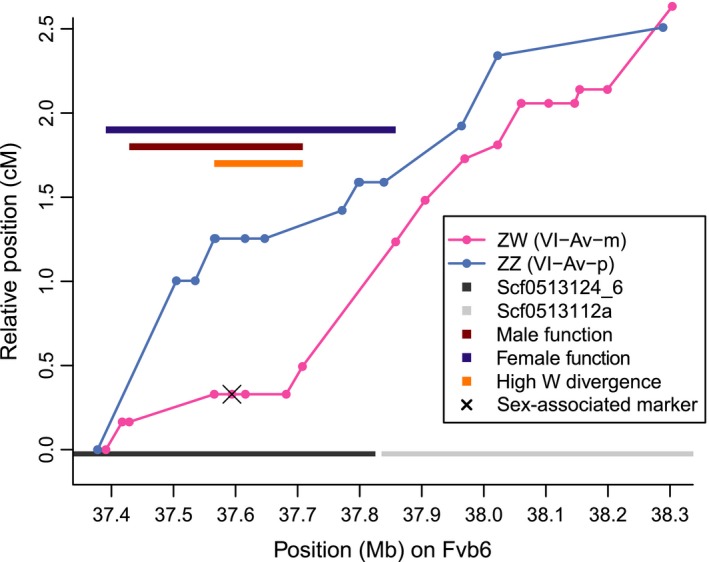Figure 3.

Fine‐mapped male and female function and recombination rates across the sex‐determining region (SDR) vicinity of Fragaria chiloensis. Physical distance (Mb) along the distal end of Fvb6, encompassing portions of two genomic scaffolds (scf0513124_6 and scf0513112a), is shown on the x‐axis. All amplicon markers in the SDR vicinity in ZW (pink) and ZZ (light blue) are plotted, with relative linkage map position (cM, arbitrarily starting at 0) shown on the y‐axis. An X marks the position of the ‘sex‐associated marker’ single nucleotide polymorphism (SNP) on ZW, which shows a high correlation with sex across the full set of unrelated plants. Recombination rates can be inferred from the slopes of lines connecting ZW (pink) and ZZ (light blue) markers. Three colored bars with arbitrary vertical position indicate different estimates of the SDR. The female‐function region showing significantly higher correlation with female fertility than the surrounding regions is indicated with a dark purple bar. The male‐function region, bounded by the recombinants that decrease the correlation with male function, is indicated with a dark red bar. The high‐W divergence region, within which most W‐specific SNPs are observed, is indicated by an orange bar. The SDR encompasses a relatively small portion of the 39 Mb chromosome. Maternal and paternal recombination rates are similar, except near the SDR, where they are lower in the mother.
